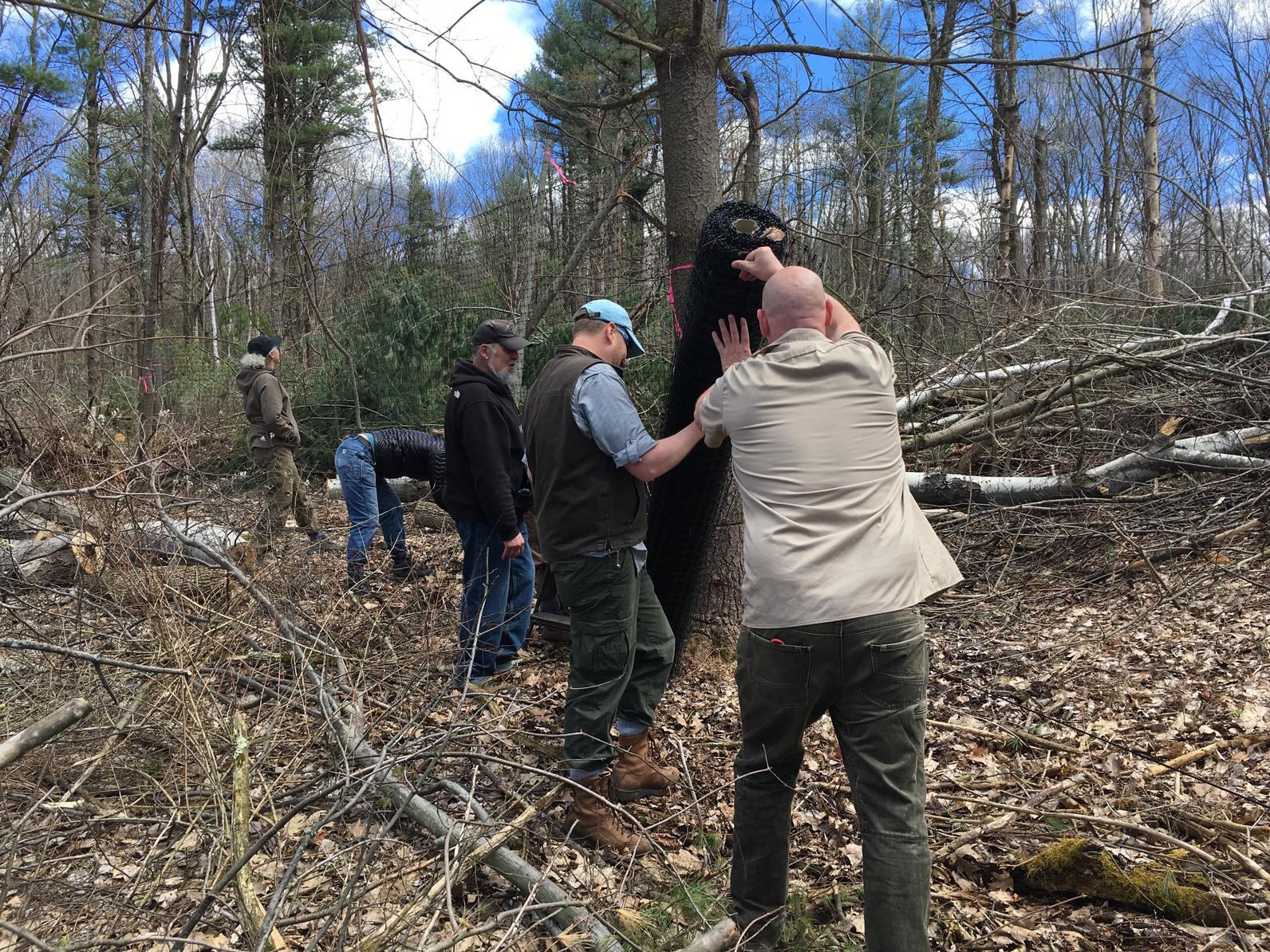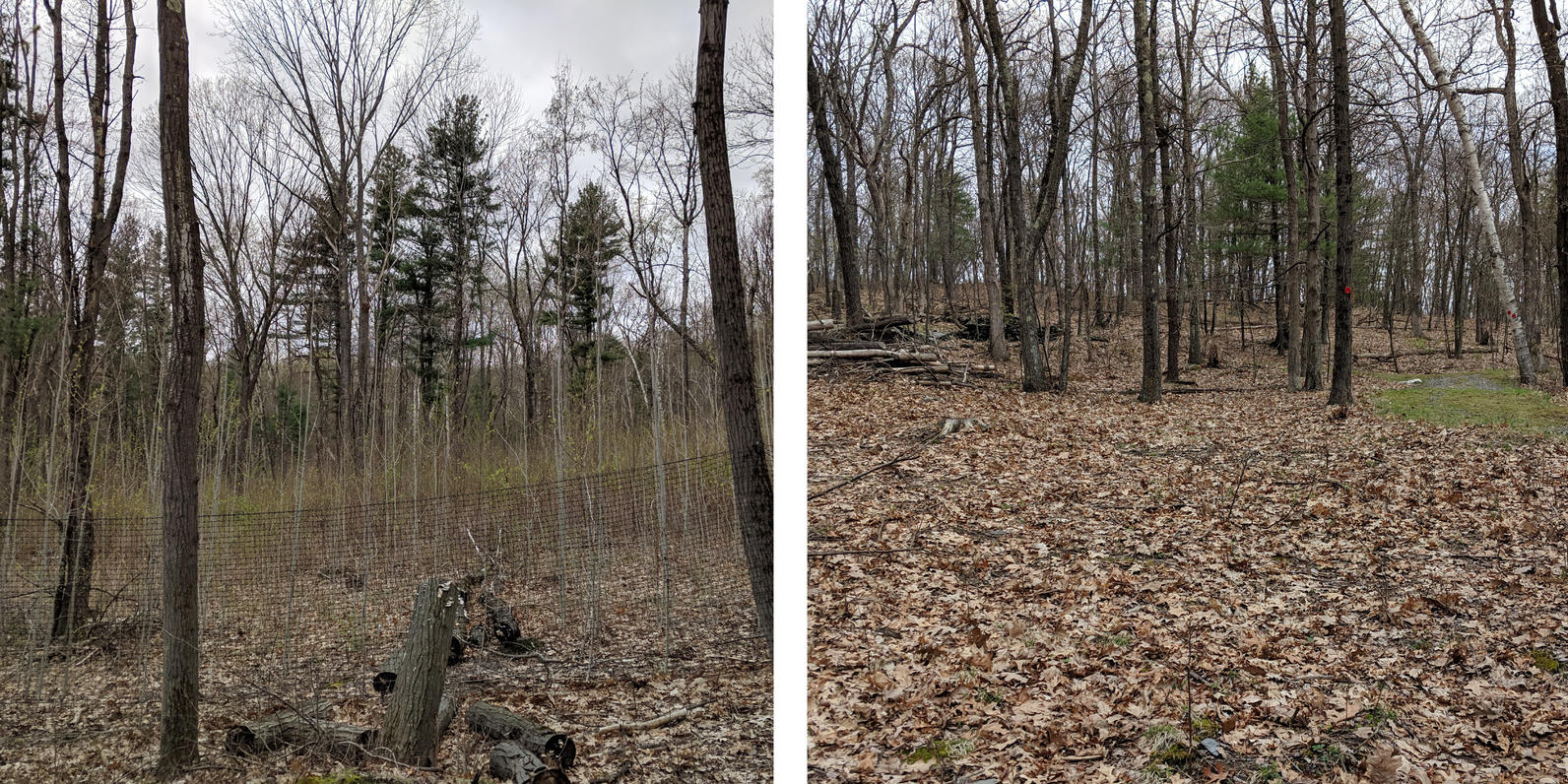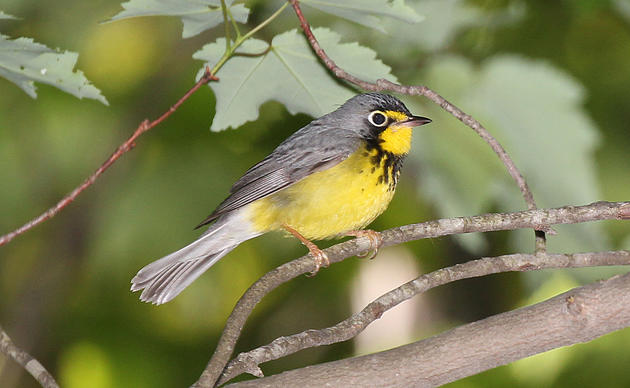New York’s forests are home to more than three dozen bird species of conservation concern. A well-managed, resilient, and diverse forest ecosystem provides critical habitat for birds during all seasons.
A strategic component of Audubon New York’s Healthy Forests Initiative takes place at the Rheinstrom Hill Audubon Sanctuary and Center, located on 1,039 acres in the Hudson Valley. This is the home of the Rheinstrom Hill forest habitat demonstration project, a model forest that Audubon New York began developing in 2012 under the guidance of a Forest Stewardship Plan.
This living classroom serves as a hands-on teaching and training tool for community members, private forest landowners, foresters, and other land managers. Participants can learn essential conservation and stewardship techniques, including sustainable forest management to improve bird habitat, controlling invasive species, and addressing the threat of overabundant deer to forest health.

Audubon’s forest management practices mimic natural disturbance events and help create forest age-class diversity where it is missing from the landscape. A well-managed forest provides breeding, migrating, and over-wintering birds with quality habitat while improving forest health and resiliency in the face of pest outbreaks and other stressors.
Rheinstrom’s forest habitat demonstration site includes two regeneration cuts, with another planned for winter 2019. A regeneration cut means most of the forest was cleared, with about 30% of the mature canopy remaining to provide structure and a seed source to grow new trees. To further ensure successful regeneration, invasive plants have been controlled, and deer fence has been installed to limit the browse of growing trees and shrubs by deer, which have exceedingly high densities in this part of the state.
“By conducting this 6-acre regeneration cut, we are creating a young forest age class that is missing from this forested landscape. The regenerating forest will provide much-needed habitat for at-risk birds that require young forest for nesting, such as American Woodcock and Eastern Towhee. It will also provide mature forest birds with cover and foraging habitat after they leave their nests,” says Suzanne Treyger, Audubon New York's Forest Program Manager.
With long-term forest management efforts are underway at this demonstration site, Audubon New York plans to deliver even more programs and opportunities for education and training. Our goal is to provide landowners and managers the tools and knowledge needed to manage forest lands as bird-friendly habitats.

Help Us Protect New York's Forests
Covering nearly 400 million acres, eastern forests create one of the most dynamic environments in the world.




